A flight in Izmir and a transfer drive to Selcuk was quick and easy. The hotel, Kalehan, is a family style place built almost courtyard style around a pool and garden, so green and cooling after the heat outside. The rooms and the hotel itself are decorated in Turkish eclectic and are small, but the staff can’t do enough for you.
| Our room middle left | 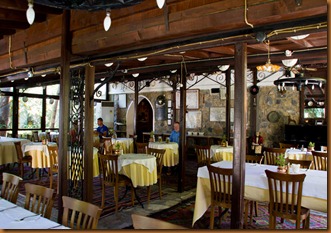 The eclectically decorated dining room |
Selcuk, at about 20,000 inhabitants, still has the air of a farming town; trailers full of watermelons for sale, many men in the “men only” cafes playing a sort of matching tile game, called, I think, OK, drinking tea or coffee and waiting for the time to work in the fields.
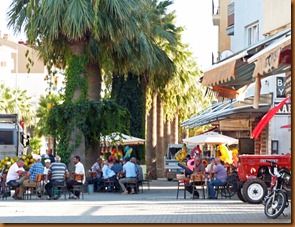 The men of the town solve the world’s problems | 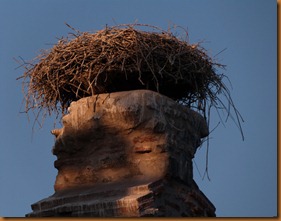 The storks’ nest. Vacated the day before when they all flew to Morocco. |
Eateries tend to be a few tables and a window in a wall selling kebabs, pide or similar. I am enjoying the fresh salad parts but find we don’t really much like the food. A bit like Greece really; many long stewed vegetable dishes and casserole type things, some grilled meats on or off skewers, rice, meatballs and so on. And so MUCH food on a set menu, at least 4 courses.
Our trip to Ephesus, which is close to town, was interesting but terribly crowded. Ali, our guide, only 6 months out from his 5 year stint at university to gain guide status, was happy to recite lots of facts and help extend our knowledge of the site. I think perhaps he will develop more of an easy style as time goes on, but he was cheerful and willing and certainly more immediate and informative than a guide book.
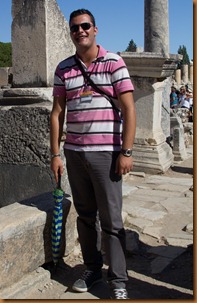 Ali, our cheerful guide | 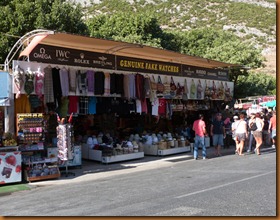 Probably the most photographed sign at Ephesus | 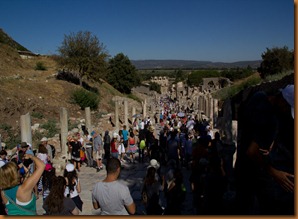 An idea of the crowds |
Ephesus was an important Roman port city with temples, including a rather lovely Temple of Hadrian, a massive theatre where they actually had gladiator and wild animal fights (unusual for a theatre) a very large library built by a son in memory of his father, paved marble ways, communal male toilets, agoras, shops and the works. Plus the nearby Temple of Artemis, now marked by one badly reconstructed column, which was one of the Seven Wonders of the Ancient World, and must indeed have been a marvellous sight as the sailors came into the port.
The Terrace Houses are 7 rich Roman houses under excavation. While we could have seen them, and would have loved to, the climb to reach them and the temperature of the day precluded that, so I think we missed the best.
In time, the river silted up the site, the harbour receded and is now 5km away, the marshes bred mosquitoes and therefore fevers and much of the site was abandoned, the material was stolen and used in other constructions, even in Agia Sophia in Istanbul and all that was left was ruin. So what is seen now is mostly reconstruction and it looks that way. And it is on the itinerary of every ship that docks at nearby Kusadasi so it is impossibly crowded.
All that is left of the temple
Later we visited the local museum which has some of the beautiful artworks found, including the many breasted Artemis and a room devoted to pieces about Eros. Small glass objects found intact in some of the houses indicated the delicacy of decoration. Very peaceful and giving maybe more of a feel of the ancient city than the ruins themselves.
 Asclepius and the snake | 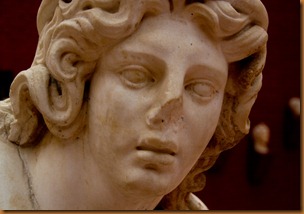 An exhaused warrior | 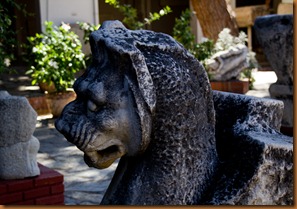 Winged lion (minus the wings) |
 Eros and Anteros Eros and Anteros | 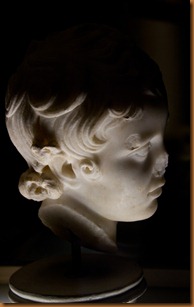 Head of Eros | 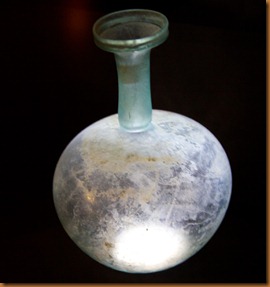 Delicate glass container |
 The amazing and rather alarming statue of Artemis
The amazing and rather alarming statue of Artemis
The nearby Basilica of St John has his supposed grave though there is little evidence to support this. Maybe the presence of a quite large treasury and the size of the building itself lend credence to it being a very important site for Christianity. From the area surrounding the Basilica we could see the beautiful old mosque, reputed to be the first in Turkey and with a peaceful garden courtyard which was supposed to influence the Blue Mosque, 300 years later. The mosque was simple and quiet. It is still in use today.
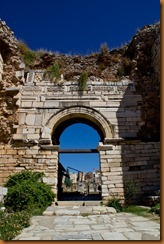 Entry to the basilica of St John | 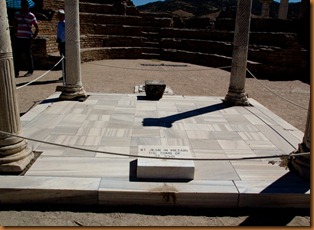 The suppose site of John’s grave | 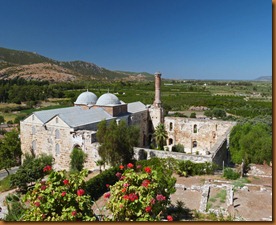 The Ali Bey mosque from above |
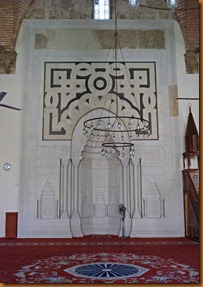
| 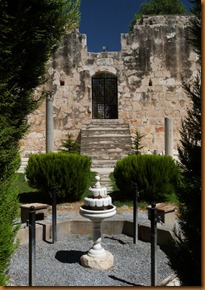
| 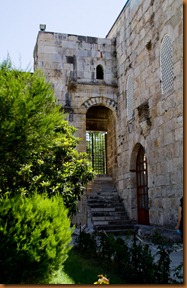
|
And as John was thought to be looking after Mary, there is a story that she lived and died here, a small house near a spring being dreamt of by a German nun in about 1800 and later discovered in the mountains. I am afraid it did less for me spiritually than Mary’s house at Loreto in Italy, but some were obviously moved to prayer.
Overall, while it is a huge site and only partially explored and excavated, I did not find that it excited or moved me as other places such as Mycenae have done. Nick liked it better, I think, but hated the crowds.
But more tomorrow; this time Pergamon.
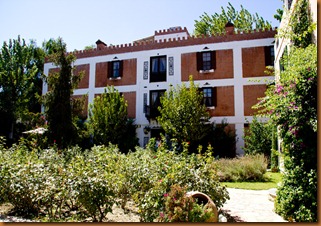

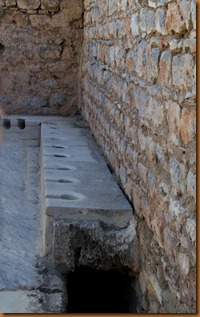
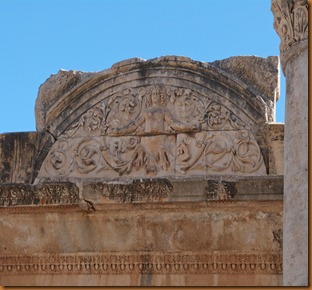

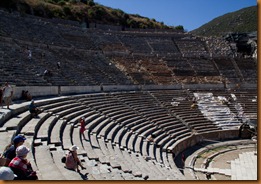
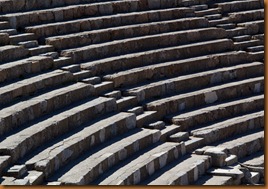
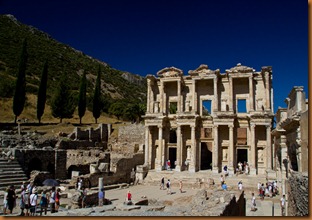

No comments:
Post a Comment